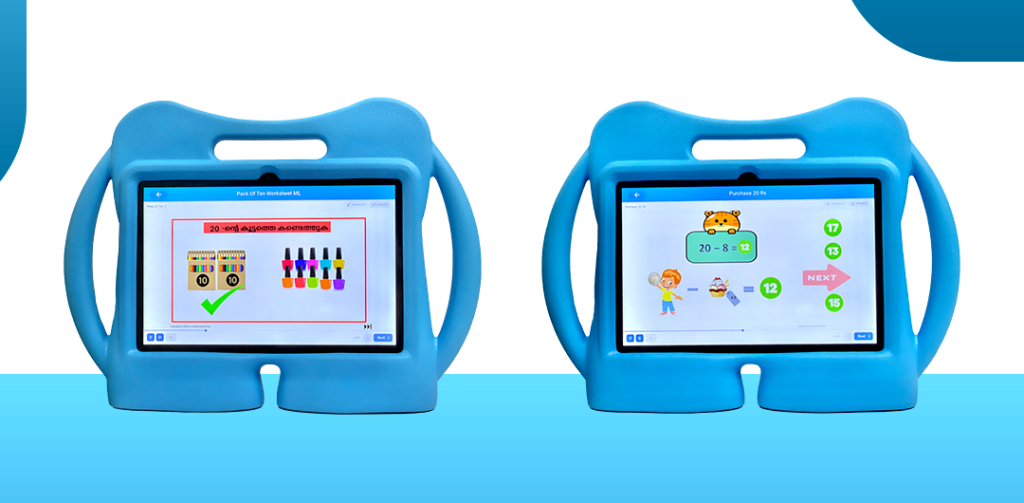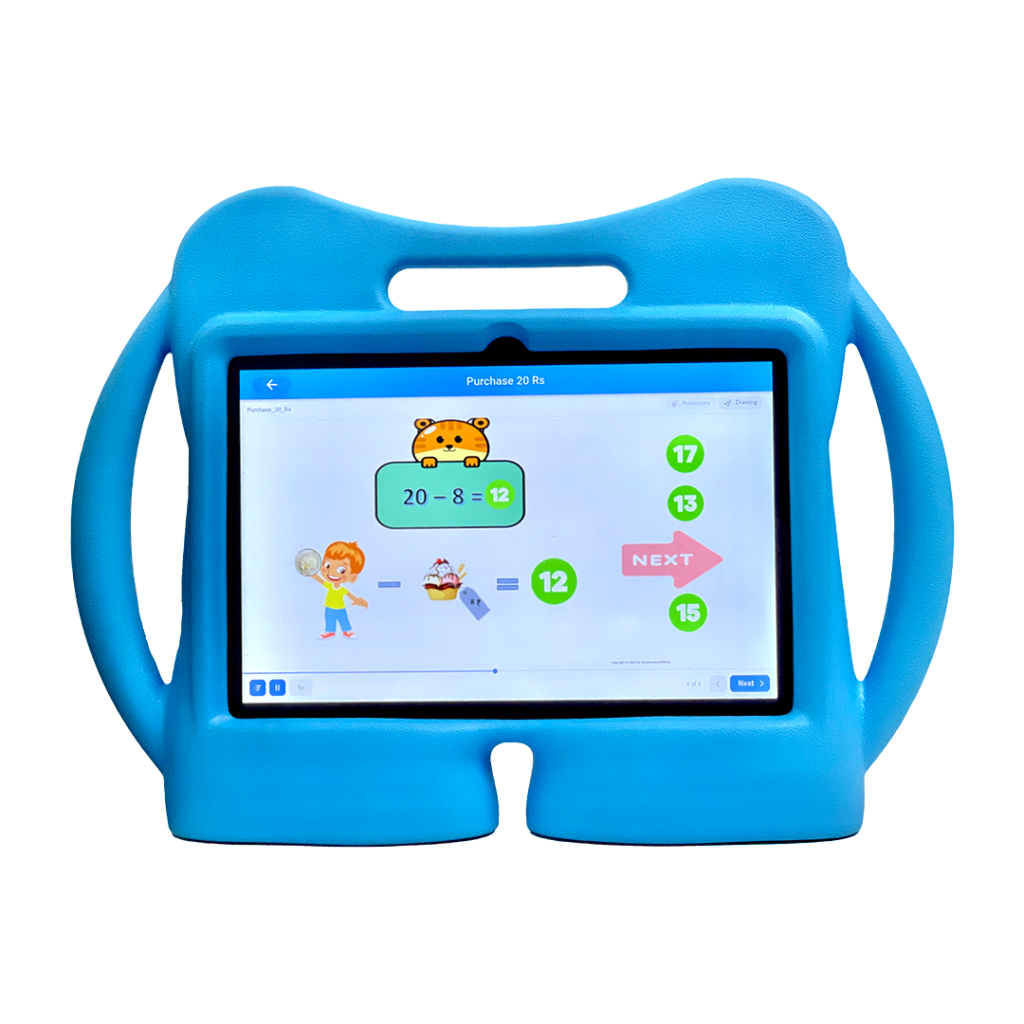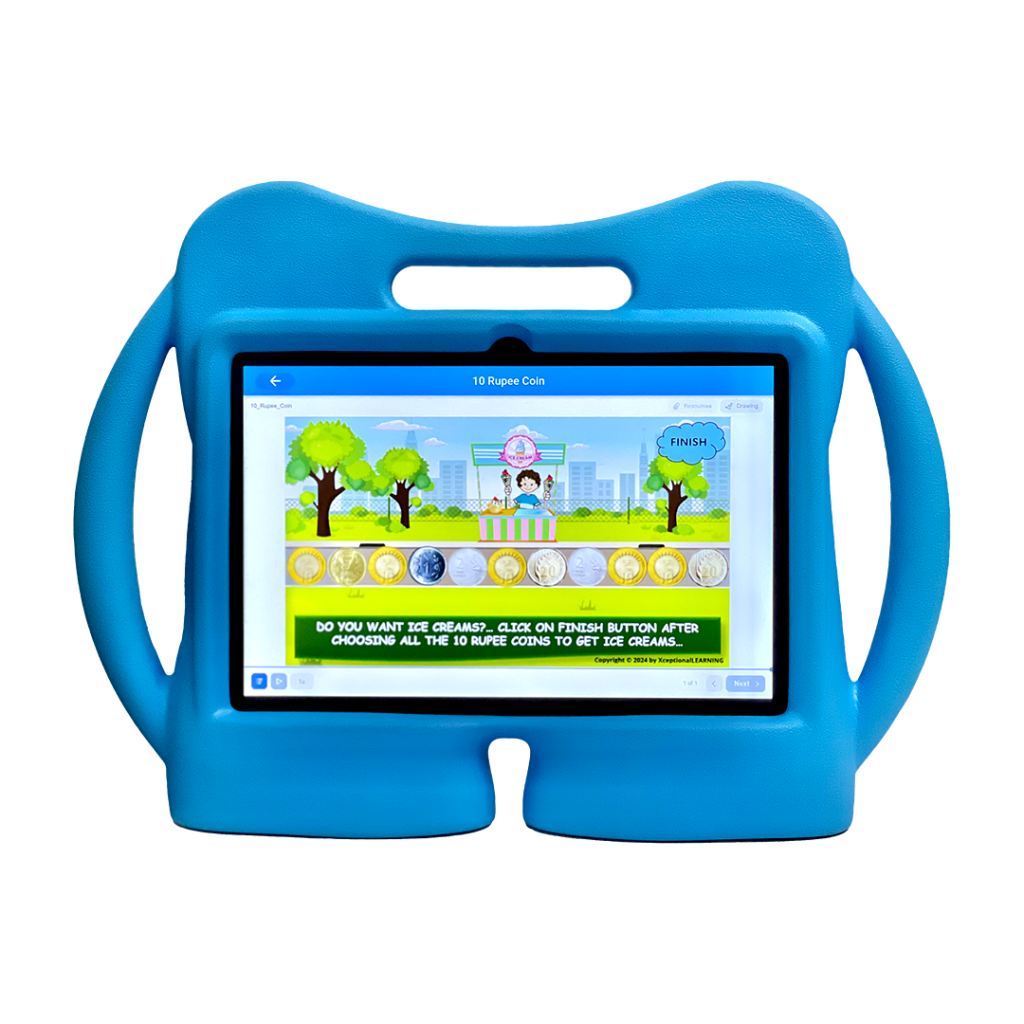Reading Time: 10 minutes
Puddles are messy to begin with—now imagine your child jumping into one! Your first reaction might be frustration. But to a child, every puddle, leaf, and rustling branch is part of a world waiting to be explored. Nature is full of wonder, and for children, it offers endless opportunities to learn and grow.
For children with special needs, though, these moments go beyond exploration. They are essential. That puddle your child stomped in? It’s helping build sensory tolerance. The butterfly they ran after—even when you asked them to stay still? That impulsive chase supports joint attention. Even the rustling of leaves can calm anxiety or spark an attempt at communication. These everyday encounters with nature offer powerful therapeutic benefits.
It is true that children with special needs progress best through hands-on, multisensory learning, and nature provides this in abundance. Multisensory inputs like textures, sounds, colours, and smells stimulate learning naturally, and experiencing these in the open spaces reduce anxiety and encourage movement. But too often, they pass by unnoticed or are difficult to build upon in a structured way. As parents, educators, or therapists, we may not always have the time or resources to fully guide children through these moments.
So how do we make sure these meaningful moments in nature lead to real, lasting progress? That’s where technology can step in—not to replace the natural world, but to help us harness its full therapeutic potential. When used thoughtfully, digital tools can help connect spontaneous outdoor experiences to structured therapy goals.
One such tool is VergeTAB, designed specifically for children with special needs. Unlike a typical tablet, VergeTAB runs only on the XceptionalLEARNING platform and is built with therapy in mind. It allows families, educators, and therapists to:
- Capture moments on the go: A child’s photo of a leaf or a video of them jumping into a puddle can become part of their learning journey.
- Align experiences with goals: Activities are customizable and guided by speech, occupational, or developmental therapy frameworks.
- Track progress across settings: Whether at home, school, or in therapy, engagement and growth are consistently monitored.
- Create continuity: All environments—home, school, and therapy—can work together to reinforce skills and support the child’s development.
Nature + VergeTAB: Real-Life Learning
1. Mathematics
Nature is a natural classroom for numeracy. Therapists and educators can use outdoor exploration to introduce mathematical concepts in a meaningful, hands-on way—and then reinforce them digitally using VergeTAB.
Step 1: Nature Exploration
Children can explore numbers and patterns through the world around them:
- Counting & Quantities: Count petals on a flower, stones in a collection jar, or the number of steps from one tree to another. These activities also build spatial awareness and early arithmetic skills.
- Sorting & Grouping: Group leaves or flowers by color, size, or texture. Then compare—Which group has more? Which has less?
- Patterns & Sequences in Nature: Identify repeating patterns in leaf veins, petal arrangements, or bark textures. Explore sequences, such as ordering stones from smallest to largest or tracking the stages of a plant’s growth (seed → sprout → flower).
- Measurement & Estimation: Compare the length of sticks or leaves, estimate the distance between two trees, or measure the length of shadows throughout the day. Children can also make predictions—like which plant will grow taller over the week—and record daily growth.
Step 2: Digital Reinforcement on VergeTAB
VergeTAB allows therapists to extend these real-life experiences into structured learning:
- Photo-Based Activities: Use the child’s own photos of nature objects to create number-matching games or visual math problems.
- Interactive Sorting: Drag and drop pictures of leaves or stones collected outdoors into categories (by size, shape, or color).
- Pattern Recognition: Build digital replicas of patterns seen in nature using interactive tiles or drawing tools.
- Measurement Logs: Children can record measurements they took outdoors (like plant height or shadow length) and track changes over time using charts or digital journals.
By grounding math concepts in the real world, VergeTAB helps children internalize abstract ideas through concrete experiences—bridging exploration and learning in a way that’s both intuitive and enjoyable.
2. Science
Science begins with curiosity—and nature provides endless opportunities to spark it. Children naturally observe, question, and explore when they’re outdoors. With gentle guidance, these spontaneous discoveries can lead to foundational scientific thinking.
Step 1: Nature Exploration
Outdoor science activities help children develop observation, inquiry, and reasoning skills:
- Observation & Recording: Watch a caterpillar crawl, follow an ant trail, or notice how leaves change color. Children can take photos or make simple sketches to track changes in size, shape, or position over time.
- Tracking Changes: Measure plant growth each day, observe shadow movement, or monitor how rain affects soil or puddles. Children begin to notice patterns and cycles in the natural world.
- Cause & Effect: Compare plant growth in sunlight vs. shade. Water one plant and leave another dry. Talk about why one grows faster—building an early understanding of scientific reasoning.
- Environmental Awareness: Observe how animals react to sound, how weather affects behavior, or how plants change with the seasons—nurturing awareness of interconnected systems.
Step 2: Digital Reinforcement on VergeTAB
VergeTAB helps turn field observations into structured, meaningful learning:
- Sequencing with Personal Media: Use photos taken by the child to arrange life cycles (e.g., seed → sprout → plant → flower) or daily changes in a tracked plant.
- Categorization Activities: Sort leaves, insects, or rocks by type, color, or texture using interactive drag-and-drop tools based on what the child collected or observed.
- Reflection & Review: Rewatch videos of insect behavior or time-lapse recordings of plant growth. Add voice notes to describe what was seen—encouraging expressive language and reasoning.
- Scientific Journaling: Children can maintain a digital nature journal—adding photos, short captions, and drawings to document and reflect on their discoveries.
- Prediction & Hypothesis Practice: Engage in guided activities that ask, “What do you think will happen next?” based on their past outdoor observations.
With VergeTAB, science is not limited to a textbook—it becomes a cycle of seeing, thinking, recording, and reflecting, all grounded in the child’s lived experiences in nature.
3. Language & Communication
Nature is full of language opportunities—if we know how to pause and listen. Outdoor experiences naturally spark conversations, storytelling, and non-verbal communication, making them an ideal environment for building language skills.
Step 1: Nature Exploration
In a natural setting, children are surrounded by rich sensory input that fuels vocabulary development and expressive language:
- Learning Environmental Words: Identify and name things like birds, trees, clouds, flowers, and textures (“soft leaf,” “smooth rock,” “buzzing bee”).
- Describing Sensory Experiences: Talk about what they hear, see, and feel—“The bird is chirping,” “The wind is strong,” or “The water is cold.”
- Labeling & Expressing Preferences: During play or walks, children can label what they collect (“This is a red flower”) and express likes/dislikes (“I like the tall tree”).
- Asking Questions & Storytelling: Encourage children to ask and answer questions about their surroundings—“Why is the leaf brown?”—or build simple nature-based stories.
- Non-Verbal & Gestural Communication: Pointing, signing, imitating animal sounds, or using facial expressions to show surprise or joy all contribute to early communication, especially for children with limited verbal skills.
Step 2: Digital Reinforcement on VergeTAB
VergeTAB builds on these natural language moments by turning them into interactive, personalized learning tools:
- AAC Support (Augmentative & Alternative Communication): For children with limited verbal skills, VergeTAB supports image-based communication. Children can match symbols to real-life objects they saw outside, or build short phrases like “big red flower” using voice-output tools.
- Photo-Prompted Vocabulary Practice: Use the child’s own photos from outdoor exploration to label objects, describe settings, and practice new words—making vocabulary learning meaningful and contextual.
- Story Creation Tools: Build simple digital storybooks using pictures or videos taken during nature walks. Children can narrate or caption their experiences (“First, I found a leaf. Then I saw a butterfly.”).
- Sentence Building Activities: With therapist-guided prompts, children can practice constructing descriptive or sequential sentences using real-life visuals (“The ant is crawling under the leaf”).
- Reflective Language Practice: Children can revisit their nature experiences through voice recordings or written reflections, strengthening memory, comprehension, and expressive language.
By anchoring language learning in real-world exploration and reinforcing it digitally, VergeTAB helps children build communication skills that are functional, expressive, and rooted in personal experience—not just rote vocabulary.
4. Life Skills
Outdoor environments offer the perfect setting for children to practice everyday responsibilities in a low-pressure, engaging way. These real-life tasks help children develop independence, self-regulation, and confidence—especially when reinforced consistently across settings.
Step 1: Practical Outdoor Tasks
Simple daily activities in nature can become powerful learning experiences:
- Gardening & Plant Care: Watering plants, weeding, or harvesting herbs teaches responsibility and routine.
- Outdoor Clean-Up: Tidying up after play—returning toys, collecting litter, or putting tools away—builds organization and task completion.
- Safety Skills: Learning to stay on paths, avoid hazards, or follow directions in a park reinforces safety awareness.
- Routine Awareness: Activities like taking turns on a swing or waiting during group walks encourage patience and social cooperation.
- Sorting & Organizing: Grouping collected leaves, stones, or sticks by size or color fosters categorization, planning, and attention to detail.
Step 2: Digital Support on VergeTAB
VergeTAB helps children track and reinforce these real-world life skills through structured, visual tools:
- Visual Schedules & Checklists: Use customizable visual guides to help children follow multi-step outdoor routines (e.g., “Water plants → Wipe hands → Put away tools”).
- Task Logging & Reflection: After completing a task, children (or adults with them) can log it using photos or icons—creating a digital record of consistency and effort.
- Motivational Tools: Award stars, badges, or visual tokens for milestones like completing a full garden routine or following safety rules independently.
- Therapist & Caregiver Prompts: Professionals can set up reminders, rewards, or step-by-step visual aids to encourage repetition and support mastery over time.
- Progress Tracking: Over days and weeks, both caregivers and children can look back at completed tasks, reinforcing a sense of achievement and routine.
With VergeTAB, life skills become visible, repeatable, and rewarding—bridging the gap between doing something once outdoors and making it part of a consistent daily habit.
5. Social & Emotional Learning (SEL)
Nature naturally creates moments that help children understand themselves and others. Whether it’s sharing a discovery, waiting for a turn, or feeling joy at spotting a butterfly—these moments are opportunities to build social and emotional skills that last.
Step 1: Peer Interaction & Emotional Awareness in Nature
Outdoor play provides space for social learning in a relaxed and less structured setting:
- Sharing & Cooperation: Children can collect leaves or stones together, take turns in nature games, or help each other on uneven ground—fostering teamwork and collaboration.
- Reading Emotions: In open play, children begin to notice and respond to peers’ facial expressions, body language, and tone of voice—learning social cues naturally.
- Conflict Resolution: Disagreements over toys or turns offer chances to practice expressing needs, using calming strategies, or asking for help.
- Self-Awareness & Regulation: Children may recognize their own emotional triggers (e.g., feeling overwhelmed by noise or excited by discovery) and use nature’s calming elements—like listening to birds or watching leaves move—to self-soothe.
- Empathy & Perspective-Taking: Watching a friend struggle or succeed allows children to practice responding kindly and understand how actions affect others.
Step 2: Digital Reinforcement on VergeTAB
VergeTAB offers gentle, structured ways to reflect on and reinforce these emotional and social experiences:
- Mood Journals with Visual Aids: Children can log how they felt during specific moments outdoors using emojis, colors, or simple icons. A photo of the moment (e.g., sharing a toy) can be paired with a feeling word (“happy,” “calm,” “frustrated”).
- Reflective Storytelling: Use videos or photos from outdoor activities to talk about what happened, how it made them feel, and how they responded—encouraging self-awareness and emotional expression.
- Guided Prompts for Social Skills: Therapists or caregivers can create digital prompts tied to real events—“What did you do when your friend was sad?” or “How did you feel when you had to wait your turn?”
- Empathy-Building Activities: Role-play scenarios or emotion-matching games using images from actual peer interactions help reinforce understanding of others’ feelings.
- Calming Strategy Libraries: Build a personalized collection of nature-based strategies (e.g., “look at the sky,” “deep breaths near the tree,” “sit quietly and listen to birds”) that children can access anytime as part of their self-regulation toolkit.
Through this blend of natural exploration and digital reflection, children develop not only the language to talk about their emotions but also the tools to manage them—and connect more meaningfully with others.
6. Creative Arts: Expression Through Nature
Nature fuels imagination. For children with special needs, outdoor play isn’t just a break from routine—it’s a chance to explore creativity through touch, sound, movement, and storytelling.
Step 1: Creative Exploration in Nature
Natural materials and open spaces invite artistic expression in organic, unstructured ways:
- Imaginative Play: Children can collect leaves, stones, or flowers to create characters, props, or settings. Mimicking bird calls or the sound of the wind can evolve into stories or dramatic play.
- Sensory Engagement: Nature offers a rich palette of colors, textures, and sounds. Children can trace leaves in dirt, sort petals by color, or arrange stones into shapes—stimulating fine motor skills and sensory processing.
- Storytelling through Movement: Children can act out scenes with found objects, perform spontaneous skits, or even use natural elements to inspire movement-based expression like dance or rhythm play.
Step 2: Digital Art & Storytelling on VergeTAB
VergeTAB allows children to capture, reflect on, and expand their creative experiences through multimedia expression:
- Nature-Inspired Drawing & Sketching: Using a stylus or finger, children can sketch the leaves or objects they collected outside, or recreate scenes from their imaginative play. Colors and textures from nature become digital art prompts.
- Digital Storybooks & Comics: Children can build simple storyboards or visual narratives using their own photos from outdoor adventures—adding drawings, captions, or voice recordings to tell their story.
- Environmental Sound Collages: Record bird songs, rustling leaves, or water dripping from plants. Children can combine these with images or drawings to create sensory-rich digital collages or music clips.
- Therapist-Guided Creative Prompts: Therapists can assign storytelling themes like “A Day in the Forest” or “My Leaf Collection’s Adventure,” helping children express thoughts, feelings, and ideas in an imaginative context.
Through VergeTAB, creative expression becomes more than a moment of play—it becomes a structured, meaningful part of therapy. Children explore language, emotion, motor coordination, and storytelling in a way that’s uniquely their own, supported by both nature and technology.
Nature + VergeTAB Integration: Daily Plan
This simple daily routine blends outdoor exploration with digital reinforcement, making therapy feel natural, engaging, and continuous.
- Morning Exploration
- Head outdoors to collect leaves, stones, or flowers. This builds sensory tolerance, sparks curiosity, and provides the foundation for later learning.
- Digital Sorting
- Take photos of collected objects and sort them on VergeTAB by size, color, or type—reinforcing math, organization, and visual discrimination.
- Language Practice
- Encourage the child to record a sentence about what they found (e.g., “This is a big green leaf”)—supporting vocabulary development and sentence building.
- Creative Expression
- Use digital tools to trace, color, or draw the collected objects—building fine motor skills and creative confidence.
- Social-Emotional Reflection
- Use emojis or simple icons to log how the child felt during the activity—enhancing emotional awareness and self-regulation.
Nature + VergeTAB Integration: Weekly Plan
A week-long schedule helps create rhythm and consistency in learning while keeping each day fresh and varied.
- Monday: Math & Counting
- Count stones or leaves during a nature walk → Practice addition or comparison on VergeTAB using photos.
- Tuesday: Science Observation
- Watch a caterpillar or plant grow → Log observations and create a digital growth timeline.
- Wednesday: Language Building
- Look up at the sky and describe what you see → Record voice notes to build descriptive language.
- Thursday: Life Skills
- Water the garden or clean up after outdoor play → Use a digital checklist to mark completed tasks.
- Friday: Social-Emotional Learning
- Play with peers or siblings outdoors → Use VergeTAB’s Mood Journal to reflect on feelings and interactions.
- Saturday: Creative Arts
- Choose a leaf, flower, or stone to sketch → Create a digital art project inspired by nature.
In a Nutshell
Children with special needs thrive on meaningful, hands-on experiences—but for progress to last, those experiences need structure, consistency, and reinforcement. This is exactly where the Nature + VergeTAB model excels.
- Therapy feels natural: Outdoor experiences provide motivation and variety; VergeTAB turns them into guided learning opportunities.
- Consistency matters: Whether at home, school, or in therapy, the same goals are reinforced across settings.
- IEP goals stay central: Every digital activity can be tailored to support the child’s individualized learning plan.
- Engagement stays high: Nature stimulates curiosity; VergeTAB helps channel it into meaningful tasks.
- Progress is visible: Parents, teachers, and therapists can track development over time—making learning transparent and measurable.
Instead of separating play from therapy, this approach blends them—turning everyday moments into stepping stones for communication, regulation, cognition, and creativity. With the right support, every day becomes an opportunity—not just to learn, but to grow with confidence.
If you’re ready to see how VergeTAB, an Digital Therapy Activity Device, can connect the wonders of nature to your child’s developmental journey, contact our team today for a demo. Together, let’s make every outdoor moment a meaningful step in growth and learning.












